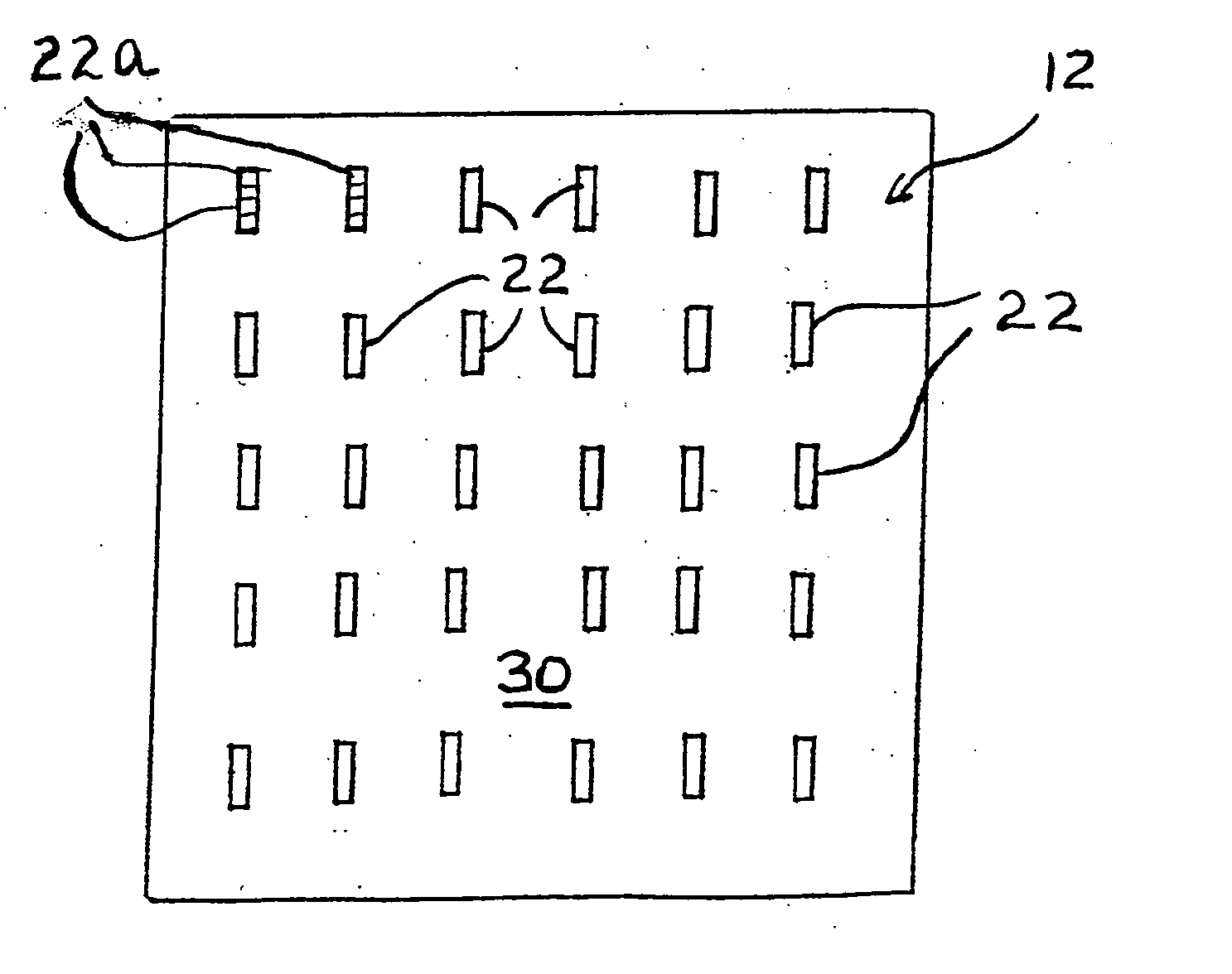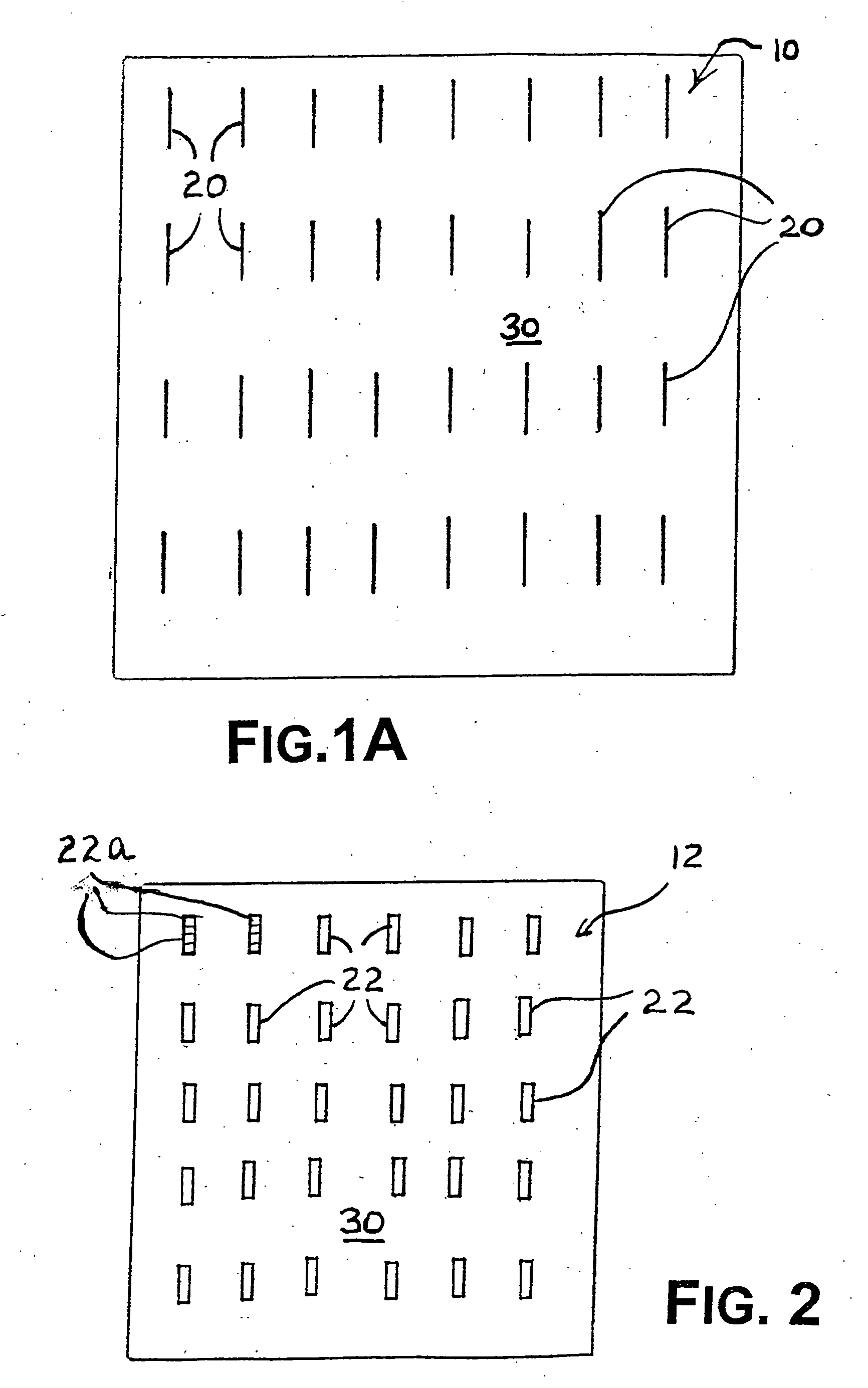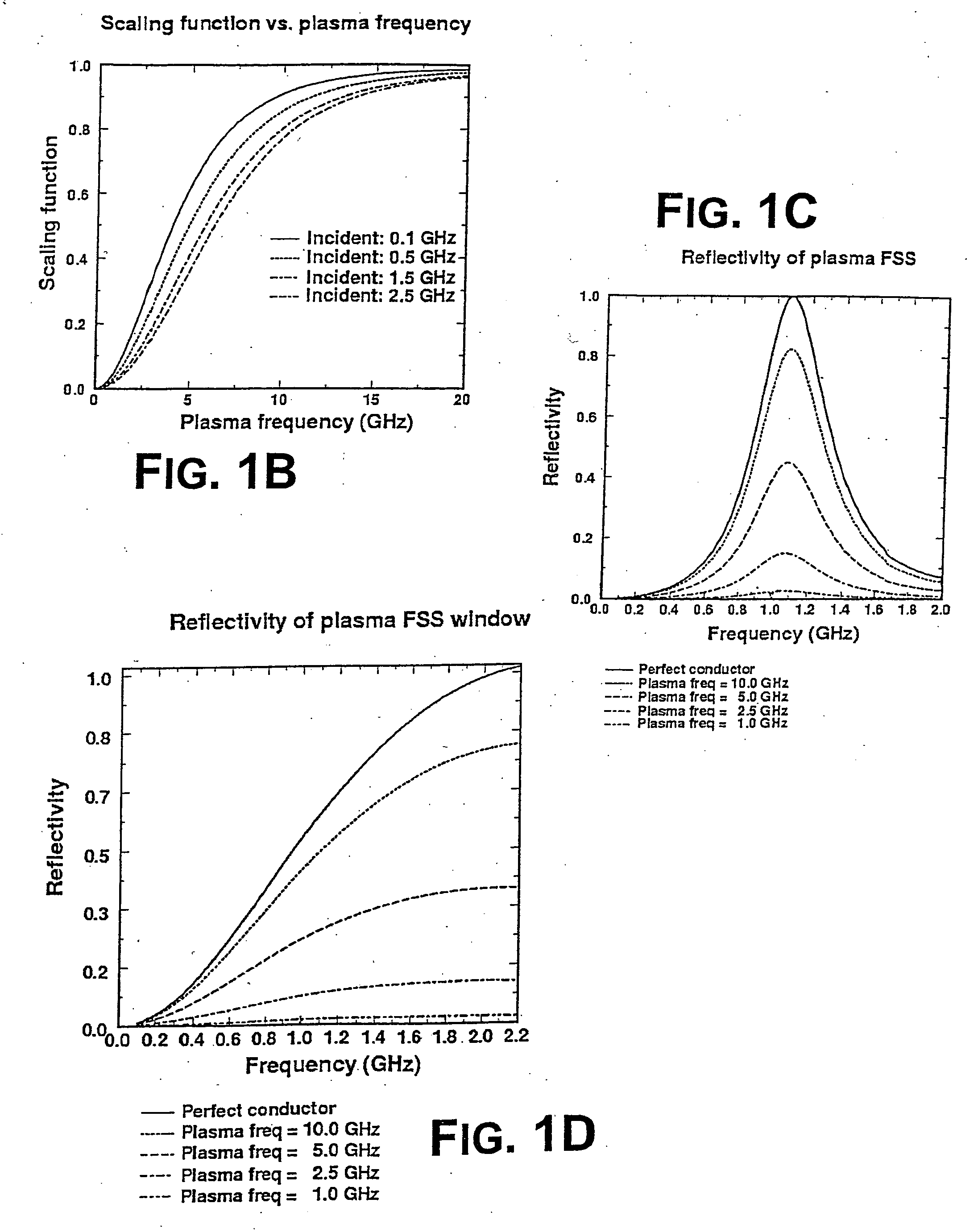Configurable arrays for steerable antennas and wireless network incorporating the steerable antennas
a technology of steerable antennas and antenna arrays, applied in the field of antennas, can solve the problems of increasing the size of the antenna array, increasing the cost of antenna installation, and increasing the cost of antenna installation, and achieve the effect of more selective control
- Summary
- Abstract
- Description
- Claims
- Application Information
AI Technical Summary
Benefits of technology
Problems solved by technology
Method used
Image
Examples
Embodiment Construction
Referring now to the drawings, in which like reference numerals are used to refer to the same or similar elements, FIG. 1A shows an array 10 of linear variable conductive elements 20 on a dielectric surface 30. The array 10 of FIG. 1A represents the foundation of the steerable antennas described herein. The array is configurable, by energizing all, none or specific ones of the elements 20, to filter selected frequencies of electromagnetic radiation, including in the optical range. It should be noted that elements 20 are dipoles. Feeds (not shown) are provided to each element 20 in the array 10 using connectors which are electrically small with respect to the dipole and relevant frequencies.
Depending on the frequency range desired to be affected by the array 10, the variable conductive elements 20 are formed by different structures. In the RF frequency range, the variable conductive elements 20 are a gaseous plasma-containing element, such as a plasma tube. In the millimeter infra...
PUM
 Login to View More
Login to View More Abstract
Description
Claims
Application Information
 Login to View More
Login to View More - R&D
- Intellectual Property
- Life Sciences
- Materials
- Tech Scout
- Unparalleled Data Quality
- Higher Quality Content
- 60% Fewer Hallucinations
Browse by: Latest US Patents, China's latest patents, Technical Efficacy Thesaurus, Application Domain, Technology Topic, Popular Technical Reports.
© 2025 PatSnap. All rights reserved.Legal|Privacy policy|Modern Slavery Act Transparency Statement|Sitemap|About US| Contact US: help@patsnap.com



